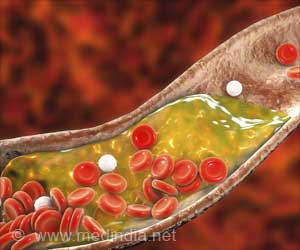
Sex-specific cardiovascular risk factors in the UK Biobank
Go to source). The Framingham Risk Score has been the standard scoring system for over fifty years in predicting an individual's likelihood of developing cardiovascular disease within the next decade. The prediction is made taking into account factors such as age, gender, cholesterol levels, blood pressure, diabetes status, and smoking habits.
A team of scientists from the United States and the Netherlands have used an extensive dataset from the UK Biobank to hypothesize new cardiovascular risk models that surpass the accuracy of the Framingham Risk Score. Furthermore, they measured the extent of underdiagnosis in women in comparison to men, and the data generated was published in the journal Frontiers in Physiology.
‘Prediction of heart disease in women improved by using advanced machine learning models. #cardiovascular disease #electrocardiograms #medindia’
Tweet it Now
Advertisement
Details of the Study and Use of Biobank Data
The UK Biobank has a database that accounts for examinations of the cardiovascular system, such as magnetic resonance imaging, pulse wave analysis, electrocardiograms (EKG), and carotid ultrasounds. These four measurements are missing in the Framingham Risk Score.The data of about 20,000 people, who were above 40 years of age and had undertaken these tests, was used to create cardiovascular risk models that are more accurate than the Framingham Risk Score.
Advertisement
Causes of Underdiagnosis of Heart Disorders in Women
Skyler St. Pierre, a researcher at Stanford University's Living Matter Lab, comments, “We found that sex-neutral criteria fail to diagnose women adequately. If sex-specific criteria were used, this underdiagnosis would be less severe,”.Skyler further added, “We also found the best exam to improve detection of cardiovascular disease in both men and women is the electrocardiogram (EKG).”
Due to the lack of gender-specific diagnostic criteria, cardiovascular disease is more frequently overlooked in women as opposed to men. This is one of the major causes of underdiagnosis.
The male and female hearts are structurally different; the female heart is smaller in size, with thinner walls, as compared to the men’s heart. This explains the underdiagnosis of women when sex-neutral criteria are used.
St. Pierre commented, “Women are underdiagnosed for first degree atrioventricular block (AV) block, a disorder affecting the heartbeat, and dilated cardiomyopathy, a heart muscle disease, twice and 1.4 times more than men, respectively,”. The study also led to findings that women are underdiagnosed for other heart conditions too.
Advertisement
What are Machine Learning Models and How Do They Benefit?
The conventional methods for analyzing a dataset use tabulations of a limited number of data variables, in a spreadsheet.As compared to traditional methods, machine learning models can use a vast number of input features, enabling them to improve and enhance the identification of individuals at risk.
St. Pierre clarified, “While traditional clinical models are easy to use, we can now use machine learning to comb through thousands of other possible factors to find new, meaningful features that could significantly improve early detection of disease,”.
Using the machine learning models, the scientists could establish that among the metrics evaluated, EKG was the most efficient in detecting cardiovascular disease in both men and women.
The researchers emphasized that the traditional risk factors too remain critical for risk assessment. They suggested that clinicians should initially screen individuals using a traditional survey methodology and the limited risk factors. Subsequently, for patients at higher risk, a second-stage screening involving EKGs should be conducted.
Future of Personalised Healthcare
The current study is an initial step toward reconsidering the risk elements associated with heart disease. Innovative technologies have great potential to predict the risks associated, enhancing risk prognosis. Nevertheless, the researchers have acknowledged certain constraints in the study that demand further consideration.One of the constraints was that Biobank reported sex as a binary variable. However, sex is a complicated concept, which needs to consider hormones, chromosomes, and physical attributes, all of which can vary in traditional descriptions of male and female.
The second constraint was the study population comprised middle-aged and elderly individuals living in the UK. Hence, this would not account for people from diverse backgrounds and age groups.
St. Pierre concluded that although sex-specific medicine is a positive step forward, it’s patient-specific medicine that would be a critical milestone for all.
In summary, the use of machine learning models with varied metrics would help in the timely identification of cardiovascular disease in both men and women.
Reference:
- Sex-specific cardiovascular risk factors in the UK Biobank - (https://www.frontiersin.org/journals/physiology/articles/10.3389/fphys.2024.1339866/full)















